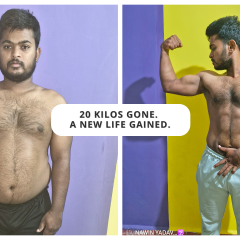 The Modern Fitness Paradigm: More is Not Always Better
The Modern Fitness Paradigm: More is Not Always Better
In today’s fitness culture, there’s an unspoken belief that the harder you push, the better your results. High-intensity workouts, back-to-back training sessions, and relentless progress tracking have become the norm. But as more athletes, trainers, and wellness experts start to shift their approach, a new reality is emerging: recovery isn’t just important—it’s essential.
The era of glorifying overtraining is fading, making way for a smarter, more holistic approach to fitness that values recovery as much as the workout itself. It’s time to stop seeing rest as a break from training and start viewing it as a fundamental part of progress.
Why Recovery is the Secret to Better Performance
Many people associate ‘rest days’ with laziness, but true fitness gains happen during recovery, not just during training. Every time you push your body through a challenging workout, you create tiny tears in your muscle fibres. It’s not the workout that makes you stronger—it’s the repair process that follows. Without proper recovery, you’re not allowing your body to rebuild, which can actually make you weaker over time.
Let’s break it down:
- Prevents Injury and Overtraining
Neglecting recovery can lead to chronic fatigue, burnout, and overuse injuries such as tendonitis, stress fractures, and muscle strains. When you allow your body time to heal, you reduce inflammation and strengthen tissues, lowering your risk of long-term setbacks.
- Boosts Performance and Strength
Think of your body as a battery—if you’re always running on low charge, you’ll never reach your full potential. Rest days allow your muscles to restore glycogen levels, helping you come back stronger, faster, and more energised for your next session.
- Supports Mental Well-being
The mind and body are deeply connected. Overtraining can lead to mood swings, increased anxiety, and even depression. Taking time to rest allows your nervous system to reset, improving mental clarity, focus, and motivation.
What Happens to Your Body During Recovery?
When you prioritise rest, your body initiates several key processes to optimise performance:
- Muscle Repair & Growth – Tiny tears in muscle fibres rebuild stronger, leading to increased strength and endurance.
- Hormonal Balance – Rest days regulate cortisol (the stress hormone) and boost testosterone and growth hormone for better muscle repair.
- Improved Sleep Quality – Recovery lowers stress levels and helps you achieve deeper, more restorative sleep.
- Reduced Inflammation – A well-rested body processes inflammation more efficiently, decreasing soreness and stiffness.
The Right Kind of Recovery: Passive vs. Active
Not all recovery looks the same, and finding the right balance is key to maximising results.
- Passive Recovery (Complete Rest)
Sometimes, doing absolutely nothing is the best thing you can do for your body. This type of recovery is ideal after intense training sessions, competitions, or when dealing with extreme fatigue.
- Full rest days
- Deep sleep
- Massage therapy
- Cold therapy (ice baths)
- Sauna & heat therapy
- Active Recovery (Gentle Movement)
On lighter training days, low-impact movement can help reduce stiffness and promote circulation without overloading your muscles.
- Walking or gentle hiking
- Yoga & stretching
- Swimming
- Light mobility work
- Foam rolling
How to Optimise Recovery for Maximum Gains
1. Listen to Your Body –
If you’re experiencing extreme soreness, chronic fatigue, or lack of motivation, your body is asking for rest. Ignoring these signs can lead to burnout.
2. Prioritise Sleep –
Sleep is the most effective natural recovery tool. Aim for 7-9 hours of high-quality sleep to support muscle repair, mental clarity, and overall health.
3. Fuel Properly –
Nutrition plays a vital role in recovery. Ensure your diet includes:
- High-quality protein for muscle repair
- Healthy fats to reduce inflammation
- Complex carbohydrates to replenish glycogen stores
- Hydration to flush out toxins and aid muscle function
4. Schedule Recovery Days –
Make recovery a planned part of your training, not an afterthought. At least one to two rest days per week should be non-negotiable, based on your training intensity.
5. Incorporate Mobility Work –
Stretching, foam rolling, and yoga can keep muscles flexible and improve range of motion, helping prevent injuries.
The Future of Fitness: Smarter, Not Harder
The fitness industry is evolving. More professionals are now embracing the concept of working smarter, not harder—and it’s paying off. Recovery is no longer seen as a luxury but a necessity for sustainable progress.
Instead of pushing through exhaustion, start recognising that rest is an essential component of success. By giving your body the recovery it deserves, you’re not only preventing injuries—you’re unlocking the full potential of your strength, endurance, and mental well-being.
Next time you’re tempted to skip a rest day, remember: rest isn’t weakness—it’s strategy. Prioritise recovery, and watch your performance soar.
Do you prioritise recovery in your fitness routine? Share your thoughts in the comments below!
#BeTheForce




Leave a Reply